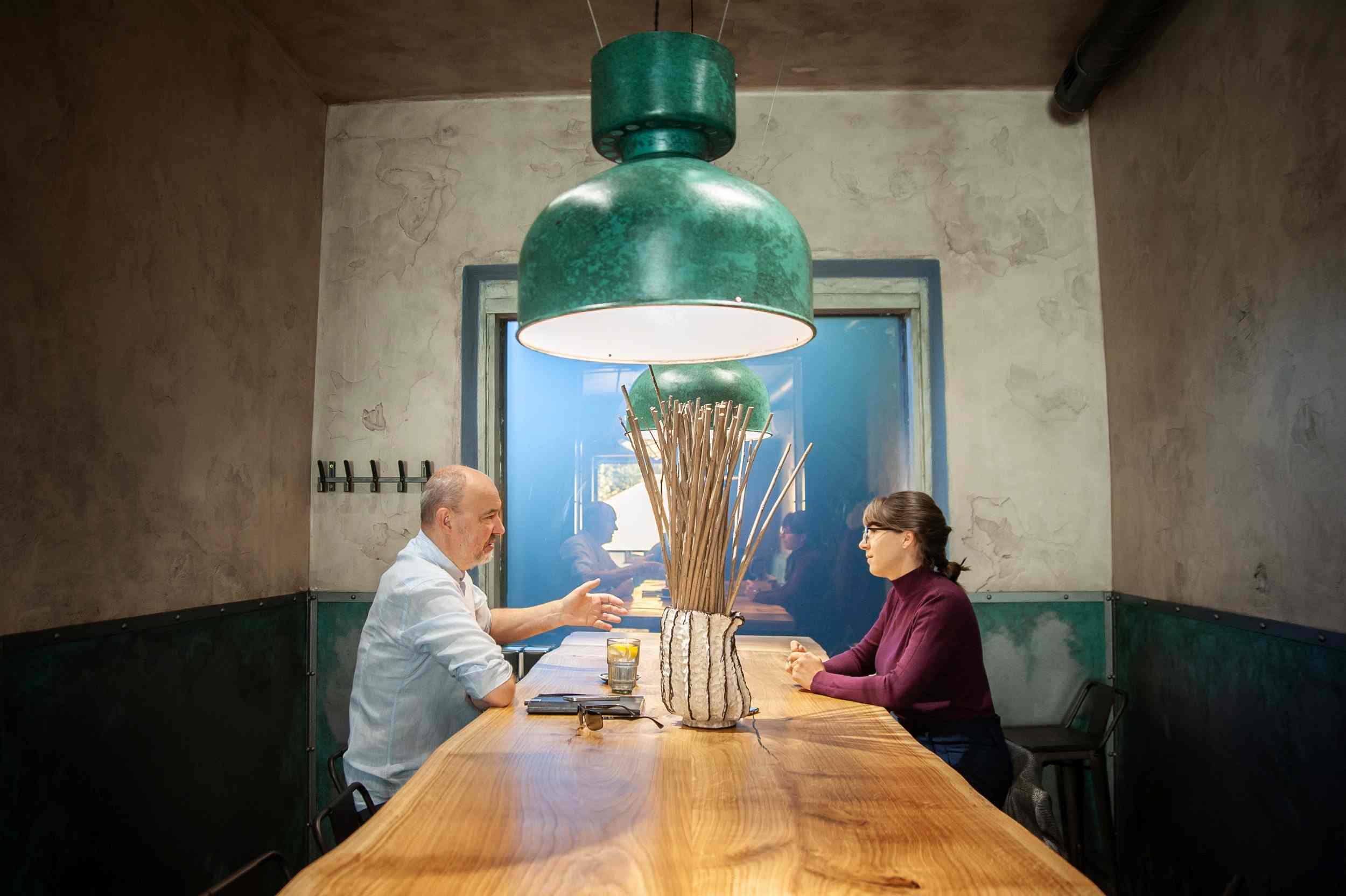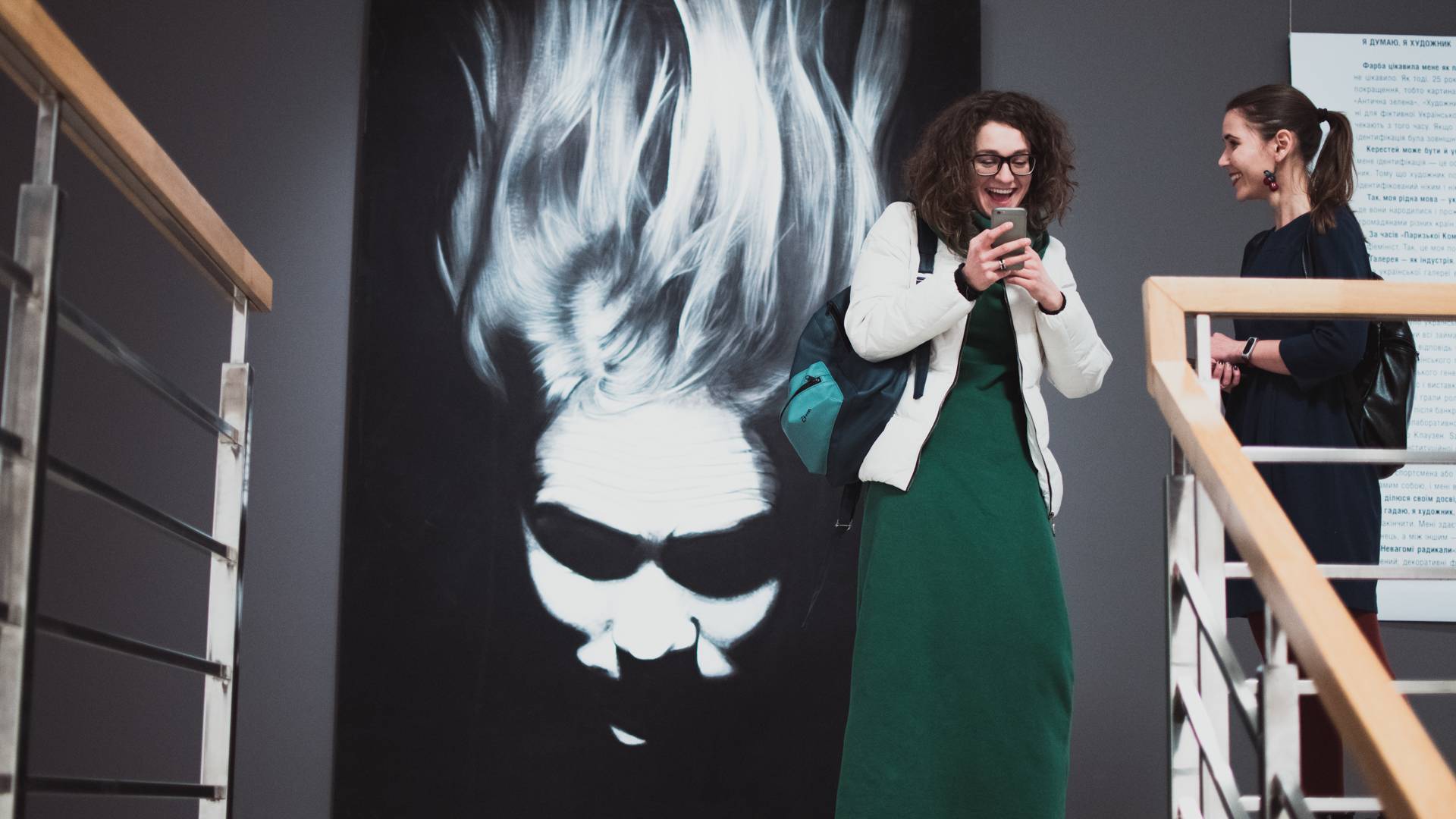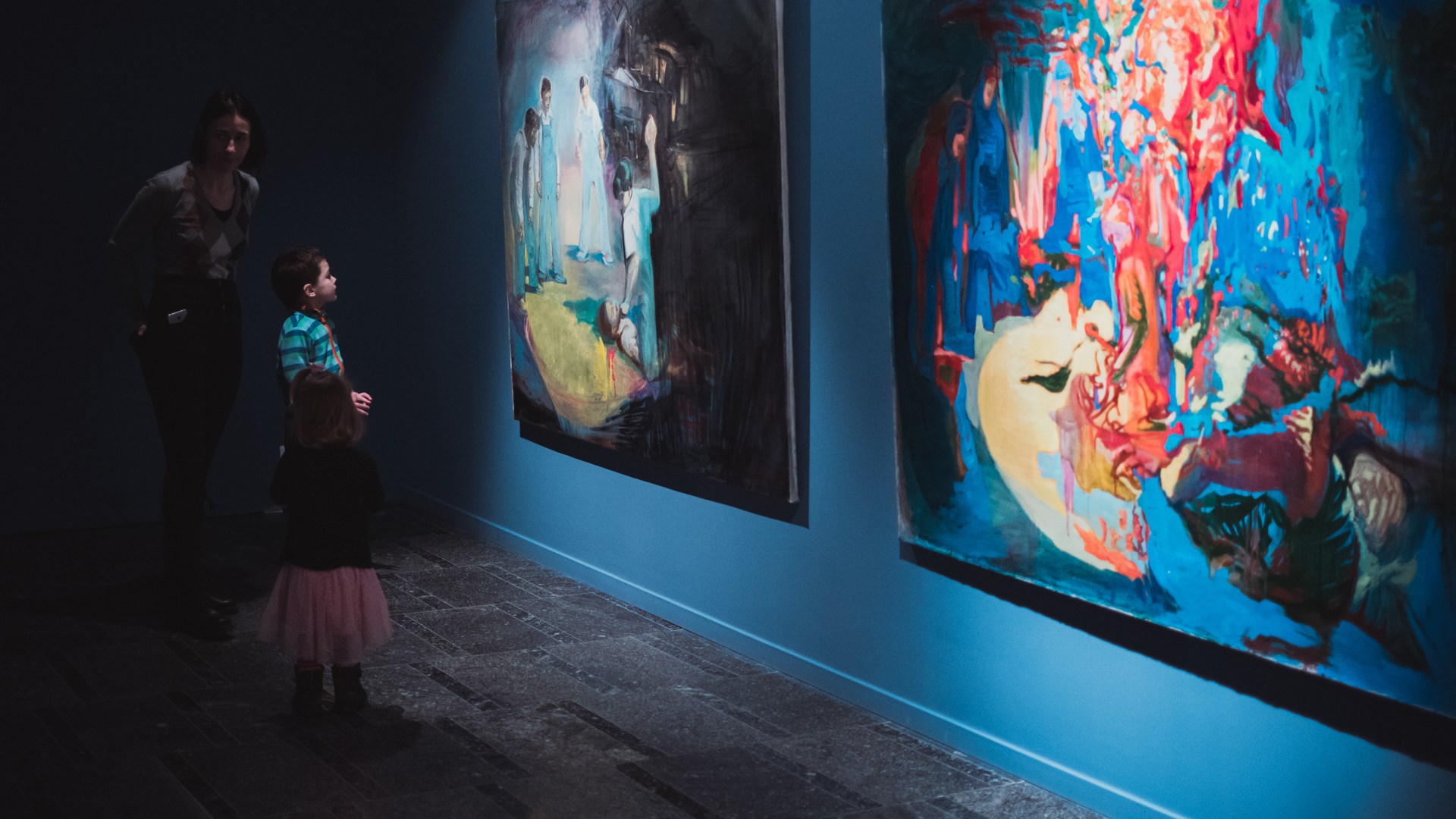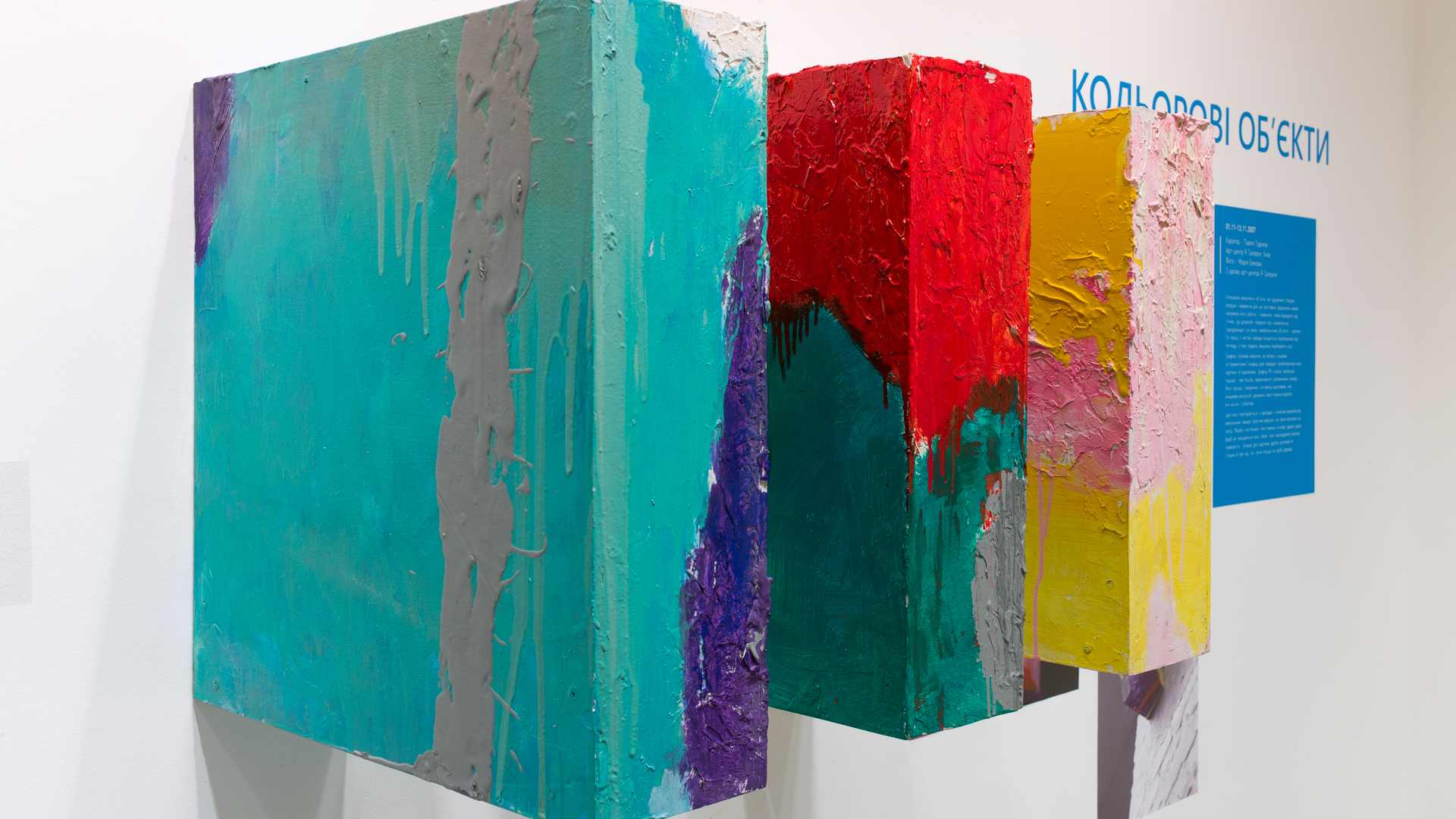When the Ilko Gallery was established in Uzhhorod, no doubt it was a real phenomenon. It has changed the whole vision of exhibitions, show facilities, music and its performance, art synthesis and opportunities for musicians, artists and viewers. It became the breath of fresh air that our city had lacked so much. We just said – our city, but the same holds true for many cities of Ukraine, too.
The six years’ time means a few dozens of exhibitions and about a hundred of music shows. The gallery has become a site for communicating with viewers, both for the most popular Ukrainian artists and for the academy students presenting their graduation papers. The gallery’s scene has hosted both well-known American and European jazzmen and 6-year-old kids, just beginning their music career. And many more – dozens of educational programs, presentations, film shows, discussions and lectures.
Mykhaylo Ilko, the gallery’s founder, seldom grants interviews and his attitude towards the foundation and the running of the art room as to something inevitable. He is the same quiet about success and challenges, and he lives his life by taking small steps. That reminds of the Chinese strategic game Go, in which everything is built up around a single step and not around a complicated combination.
So now we are talking with Mykhaylo on what it means to launch an art center in a small town, the challenges and surprises, expectations and reality, nice projects, music and art.

– Mykhaylo, is it correct to say that your gallery has been working for 6 years by now?
– Six and a half.
– What was your inner demand or motivation to launch it?
– It was rather some kind of artistic delusion. Otherwise I cannot explain it logically. In the end, I wanted to come to Transcarpathia more often and spend more time with my dad.
– You are a very systematic person. Did you consider a business plan for the project, development stages, success and fail as possible options?
– No, actually not. Before that we used to do all the projects in a very detailed manner, systematically, surveying and measuring everything. But everything was different with the gallery. The whole paradigm of “essentials – esse” had to be changed. We had always put down at every project beginning the item ”essentials”. In the case with the gallery the main point was the essence of the gallery itself. Definitely, it is important to be a perfectionist in such matters but is only true when it is about launching a business. That was not the case.
We started the job with an a priori thought in mind: we’re doing something good. As soon as a new task arose, we did it. But as we realized that this whole project was going to become endless and we could not have definite targets, then we stopped to raise the point of a business plan and any kind of planning at all.
– Why didn’t you set up goals? Because it was your own project?
– Because it simply moved beyond any limits of measurability. In case we had drawn a clear and correct plan: the way it should be and the way is going to be, I guess the gallery would not have appeared at all. Once you change the paradigm, everything is broken up. We decided that we would stick to the strategy of making small steps. Just like in the old Chinese strategic game of Go, where everything is built up around a single step and not a whole complicated combination. So we decided we should complete stages once they appeared. We could control our resources and potentials and had a clear vision.
– How long did it take you to get prepared for the opening?
– We started designing the building project but it took a long time before we liked it. As we realized things were going on pretty well, we started implementing the design. The building process started back in 2009 and completed by the beginning of 2012. Then we made a break and finally got opened in 2013.
The hardest thing was to realize we should do the project by taking small steps. What do I mean? I have experienced working together with people that have the Anglo-Saxon type of thinking, and it was hard to understand each other in the beginning. And I came across an article on inductive and deductive thinking. It dwelt on Englishmen; as it appears, they think inductively, that is from minor things to greater things. First they clear up their own yard, then around their neighborhood, then in their city and in the whole country. While we often think deductively: about cleaning up the whole planet, and the rubbish in the yard will be collected somehow. This is it: when you have a vision, you must get a result, do a single simple action and then more of these. That’s how we moved on with the project.
Pavlo Kerestey’s exhibition. Photo by: Vitaliy Mariash
– What is the connection between your vision of the gallery’s running and that of your father? For his creative work was a part of your motivation to open the gallery…
– That’s very simple: the one to do the job is also to be the head and to be in charge for it.
– What about the essence of the gallery’s existence: has it changed for you personally?
– To our people the result of an activity is often more important than the activity itself. While it is the process that is more important for us.
– What is your idea of the result of the process?
– However common it may sound, but we all want to make life a bit better and, well, more interesting. It reminds me of a situation that happened to Hendel, the famous composer. When he was told that people like his music, he replied that it would be nice if it could also make them better.
– You tell of your success seldom and unwillingly. And it seems to me that you generally underestimate them. What is your estimate of what you did to the gallery, in the context of Uzhhorod, to be precise?
– Look, there are intentions, actions, conditions. People set up goals and exist in certain conditions. They may be permanent or those that you may influence somehow, like get involved into creating conditions and then implement something. So it seems to me that it is important to analyze: what a person did under certain conditions. If you live in the centre of the world it very probable that the mainstream will push you up. And it is difficult with the pushing in a small town. So before estimating it is important to pick up a correct ruler, a correct scale.
Whether we want it or not, but the gallery is a kind of social activity, for it works not independently but in a certain environment. So if we are to estimate it from this point of view, it seems to me that everything runs very well. But I mean not what we do but the way it cooperates and interacts with the environment.
Tiberii Silvashi’s exhibition
– As you were planning the opening ceremony, what was your idea of the visitors? And was it different in the end?
– We did everything differently from the way we should have to, from the point of view of business logics. Despite the fact that it is not a business, we try to keep up with business processes in this activity. We did no research on our target audience and we never knew it. We just saw our friends and thought: OK, we got two of the kind, there’s gonna be three. My image and reminiscences on Transcarpathia were stronger than the reality. Of course, our initial vision of the exhibition activity was different. We divided into section and separated things but then we realized that we should not do that.
– As the gallery founder and the project supervisor, how interesting have the exhibitions been for you through all these years?
– Putting it into our context and under our conditions, it seems to me they have been good. Nothing you would call simply bad. And some were really great.
In my opinion, the most important were those we called “The great comebacks of artists”. I had a kind of a short-list of people I wanted to see myself. We did an exhibition for Pavlo Kerestey, Tiberiy Silvashi and Pavlo Gudimov. As for Pavlo Kovach, he sounded in a new way, I guess. Pavlo Bedzir’s exhibition was powerful. I still think that my father’s sketches of the 1960’s are beautiful, although not completely elaborated.
As for the group exhibitions, I liked ”Edelweiss”. It may have lacked actual art but, it is generally too technological and scarce in our place. There were some very nice in-process things that we did together with Taras Tabaka. I never tried to get any extraordinary result. Rather, I wanted to see if it could be crystallized and if it could get any growth and development.
– Have you had any pleasant discoveries?
– Yes, surely. It is this very group of young artists, those of a new generation. That was cool. What I liked about them is that they live in a certain environment, that of interesting and radiant personalities.




A performance by Gregory Boyd and Oleksiy Petukhov trio. Photo by: Vitaliy Mariash
– What about Kyiv and Transcarpathian contexts? Are they similar or rather different?
These cities are different in their size and geography, and the same goes for the art sphere. What is cool and perspective about Uzhhorod is the opportunity to build up some atmosphere. And it will be close to real life than what Kyiv has got. For instance, you may gather up your friends or family, go to a concert and walk back home. You’ll never lose the emotion you got. While in Kyiv, before you get home by public transport or even by your own car after the concert, everything will be spilled. That’s why I think art has a stronger impact on people’s real life.
– How did you have the idea of hosting music shows? And how did you manage to draw such a number of gifted musicians to Uzhhorod?
– It may sound weird but we initially wanted that our music parties were not attended by musicians and openings of exhibitions – by artists. We needed doctors, builders, waiters. That’s important. Imagine the situation when restaurants are visited by restaurant owners, tasting food and telling it is not yummy. Once we had a conversation with some old friends and I mentioned about our current exhibition of an Uzhhorodian artist and how cool it is. And the woman replied: Oh, I have just been to Zurich and saw Matisse. So I’m not keen on visiting your gallery. And then my thought was: indeed, visiting some common exhibitions after Matisse… (Editor – laughing).
Now, to put it seriously, our music programs appeared due to our continual talks on art synthesis that we had with Aliona Turianytsia. As a result, it happened so that music became almost the greatest discovery; not a cherry on top but the tart itself. This was a cognizant point of view and it worked in the end. One should be open to an adventure and give it a chance. This is what happened with us. Once I got a phone call and picked up. Then I agreed to have a band performance in the gallery. Then came another band and that’s how it all began.
A performance by Gregory Boyd
– Is selection important for the gallery?
– We don’t make a goal in itself out of it, but yes, it’s very important. We need it to have better results in the end. It’s important to mark: the selection is subjective. Ours is not an institution with 1000 people of staff and everything is done objectively. We can’t be objective and we don’t want to. One thing is true: you shouldn’t do things you don’t like.
– So why do you do it?
– The older generation may not understand it but still: I do it for my own pleasure. People’s needs and the way they satisfy them are different. And it makes sense for me.
– You pointed out the exhibitions that you think were really great. And, talking not just about them but the whole 6-year’s activity of the gallery – what was great about it?
– The best thing is the people generated by the city and gathered around what we do. Uzhhorod’s population is a bit over 100 thousand people, while the main audience makes up to 400 and with the friend network it’s over 2 thousand families. And these are people that really need the gallery keep working.




A performance by Ray Brown. Photo by: Vitaliy Mariash
– What is your recipe for reforming the city’s cultural and art life?
– Firstly, there are things that are not subject to reforming. Secondly, it seems to me that we have a kind of culture, though deformed through a historic period. And it certainly has its own sense. Nobody can paint anything on a clean sheet of paper, because it’s a kind of purple squirrel. It is not cities that have nice artists that you call artistic but a city where people need artists. A painter doesn’t do art, he is made by the society himself. So unless society is able to make a request for art, it will not get it.
And as for reforming, I’ll tell you the following. Children that go in for music understand Maths better and solve logical problems. The conclusion is that children must pick up music. Otherwise they will be drinking beer in the backstreet and beat you in the face. And they will be skillful in that. Do kids want to learn music? No. So you, as an adult, have to invent conditions and create them so that the child will be willing to do it. And what have we got? Discipline, marching in a row. It doesn’t work.
Art must become a demand. What do we need it for? To think differently, think in variants and obtain better results. Unfortunately, many of our people visit exhibitions to find what they like. With this approach, there will be less and less of what they like with each coming year. And in case they made a mistake at the beginning, the quality of what they will be seeking at exhibitions will be dubious. In the ideal case, a person is to come and see things he didn’t like before, comprehend them and obtain something new. And, the word “like” itself is a very restricted term that has nothing in common with rethinking and introspections.
– Do locations like the gallery change the city?
– They try to. Provided the society has a critical mass of people that can change something, about 5-7%, then there is a real opportunity to change the city. Our format of activity can change something as soon as we have such people. Those able to think. In the whole world, they attach great importance to the creative sector, that improves eco-system in the society. It is about making investments into children that will not steal your wallet at the embankment at night. As for myself, I invest into better future.
Disclaimer: the present material is presented by the civic community of “Institute of Central European Strategy” with the support by US Agency for International Development (USAID). Creating the material became possible with sincere support from the American people as provided via US Agency for International Development (USAID). The contents or the material is a sole responsibility of the civic community of “Institute of Central European Strategy” and does not necessarily reflect opinion of USAID or USA government. Reproduction and use of any part of this material in any format, including graphical, electronic, copying or using in any other way whatsoever is prohibited without a link to the original source.

Text: Rosana Tuzhanska
Photo and video: Anton Ryzhykh






























